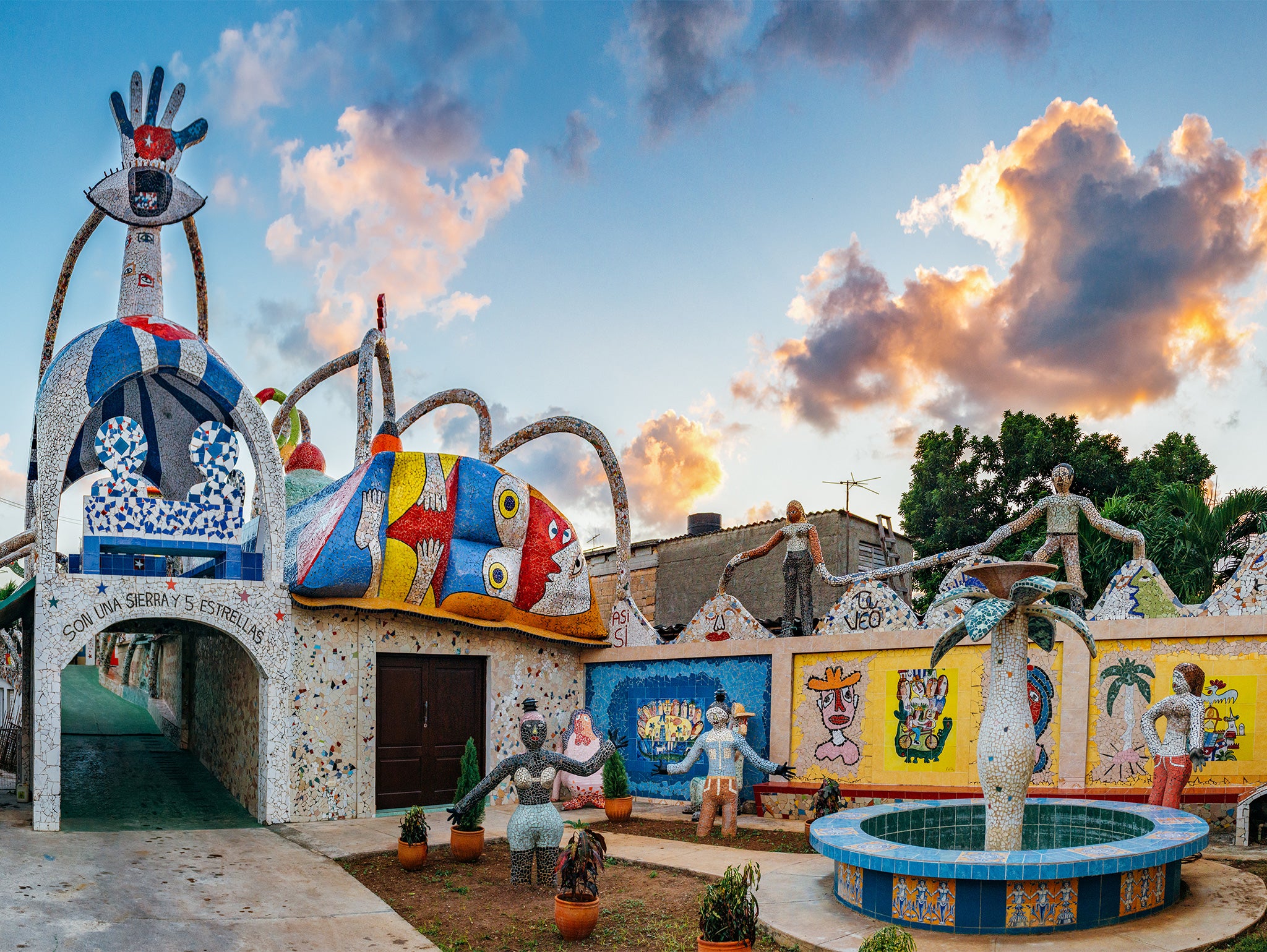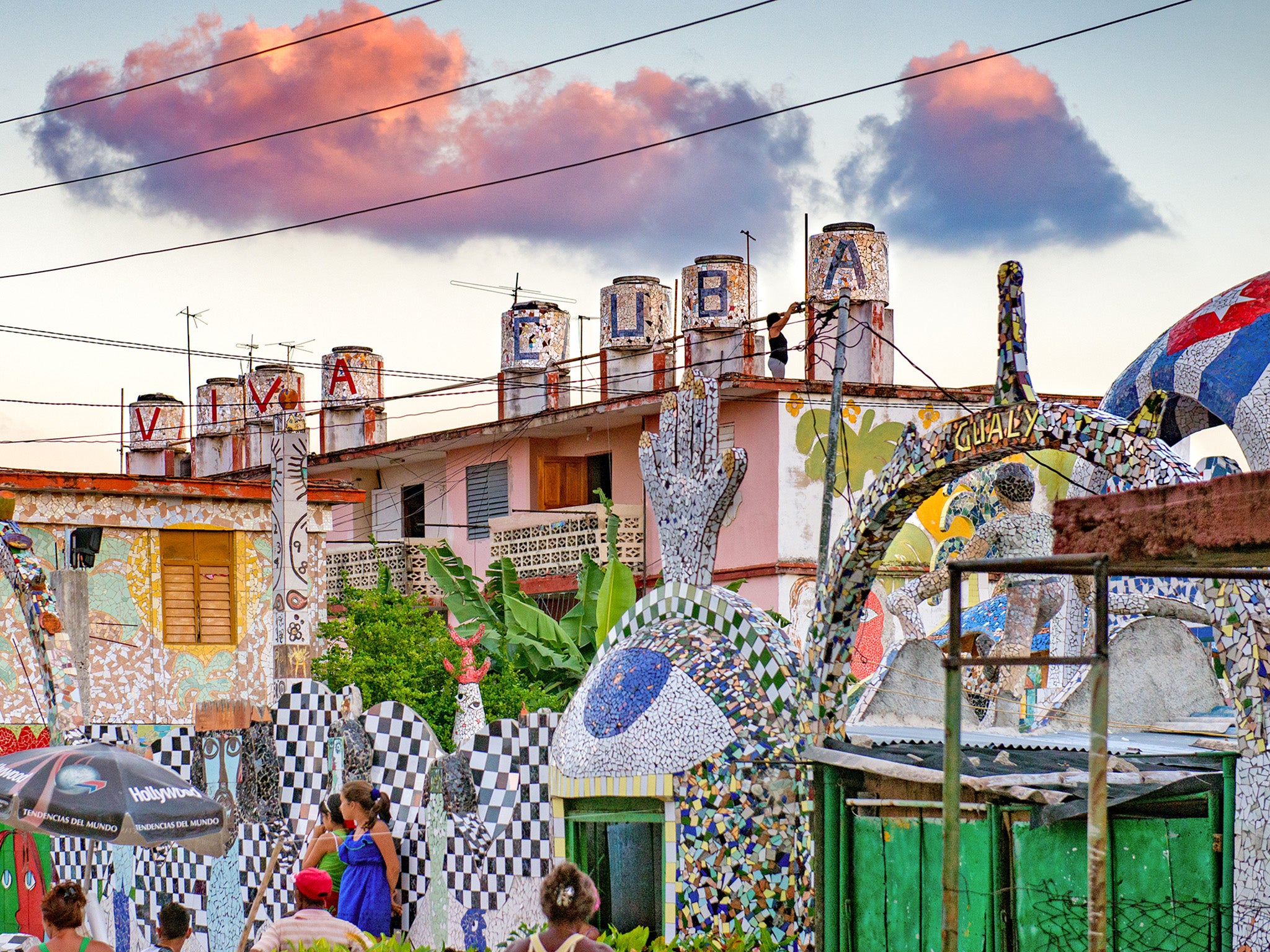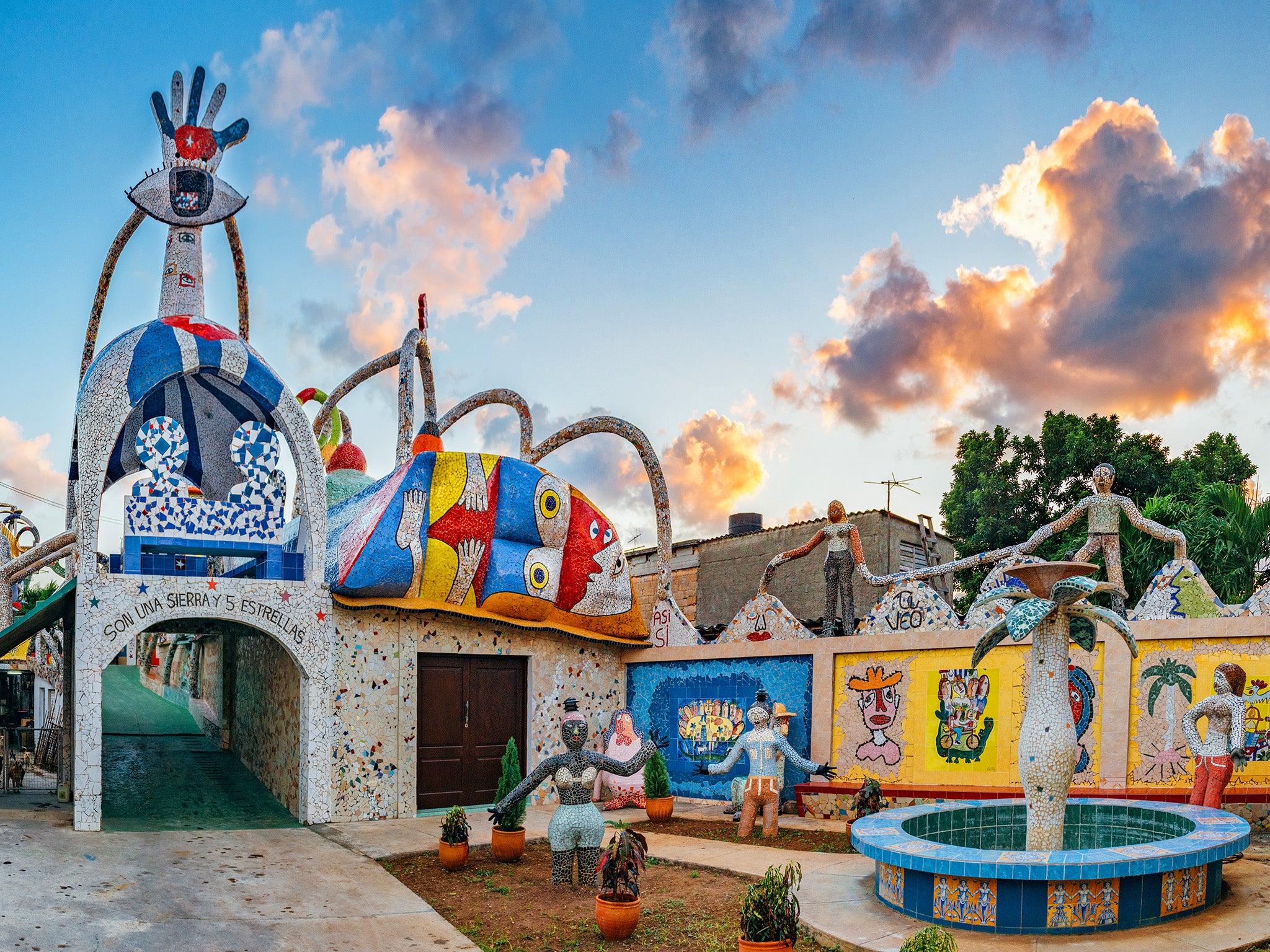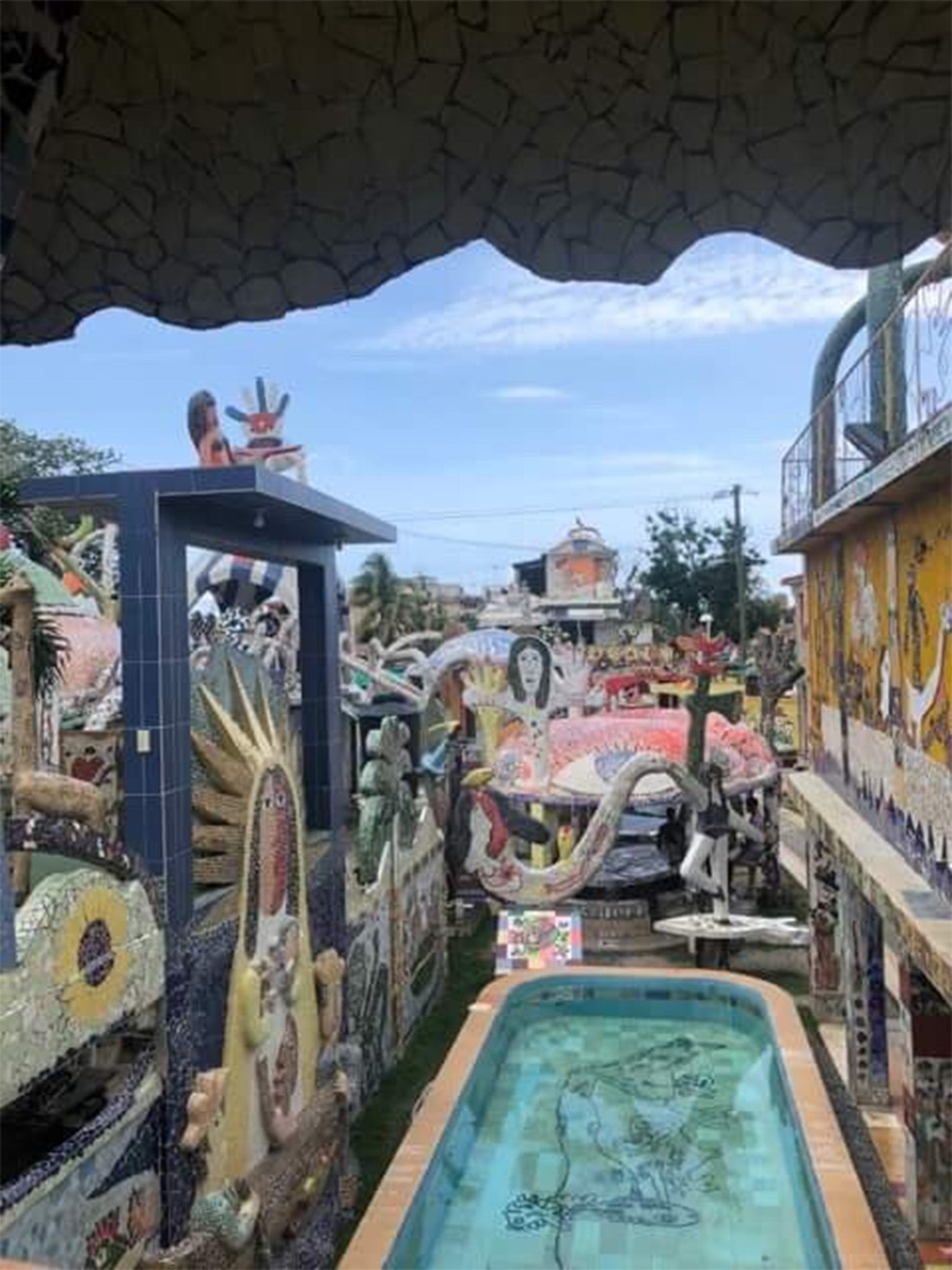The Independent's journalism is supported by our readers. When you purchase through links on our site, we may earn commission.
Fusterlandia: The Cuban design project that has transformed a community
‘Picasso of Cuba’ turned rundown neighbourhood into vibrant collaborative canvas

A stone’s throw from downtown Havana and its grand dilapidation is the unassuming village of Jaimanitas – and an architectural dreamscape.
Inspired by his time in Europe and public architecture projects like Gaudi’s Park Güell, celebrated Cuban artist Jose Rodriguez Fuster went back to his fisherman roots and to the impoverished costal town to begin a transformative project.
In 1975, he converted his own home into an art museum by adorning it with mosaic tiles. “I started building my dream,” he says.

His neighbours in the community were so attracted by the murals and colourful nativism that they gave up their homes to Fuster, so that he could expand the project. Before long, they began to contribute, and a new generation of artists and architects was born.
Now, although the focal centre of the project is still Fuster’s home, Taller-Estudio Jose Fuster, the whole neighbourhood is a kaleidoscope of intricate mosaics and sculpture, known as Fusterlandia.
Visitors can explore the undulating walkways and labyrinthine passages, passing under archways and examining the ceramics close-up, in this unique example of modern art and architecture. Pro tip: climb a few levels up to get the best views.

The entrance declares the park an “homage to Gaudi”, which is instantly clear in the curved lines and intricate tiling, and Romanian pioneer of modernism Constantin Brancusi is present in the public interaction with the sculpture and loyalty to peasant roots.
But you can see why Fuster is known as the “Picasso of the Caribbean”, with his bold, whimsical colour and surrealist, childlike depictions.
Evocative of Europe’s artistic greats it may be, but the project is Caribbean in soul: chickens, palm trees and crocodiles dot the walls, with nods to indigenous folk history and Santeria beliefs. Of course, Cuban flags and “Viva Cuba” can be seen all over the barrio.

Almost every surface of the neighbourhood, from street signs to park benches, has been decorated – if not by Fuster, then by his neighbours, family or other Cuban talents such as the formidable Eduardo Roca Salazar, known as Choco, and emerging artst Zaida del Rio.
Fuster himself can still be seen around the barrio, working and interacting with his neighbours or painting ceramics with his son, still with the objective of creating the biggest mural in the world.
The project stands as a stunning testament to how architecture goes beyond physical functionality, and comes to shape and be shaped by its community.
For more information, or to arrange transportation and tours, visit Cuba Direct
Join our commenting forum
Join thought-provoking conversations, follow other Independent readers and see their replies
Comments